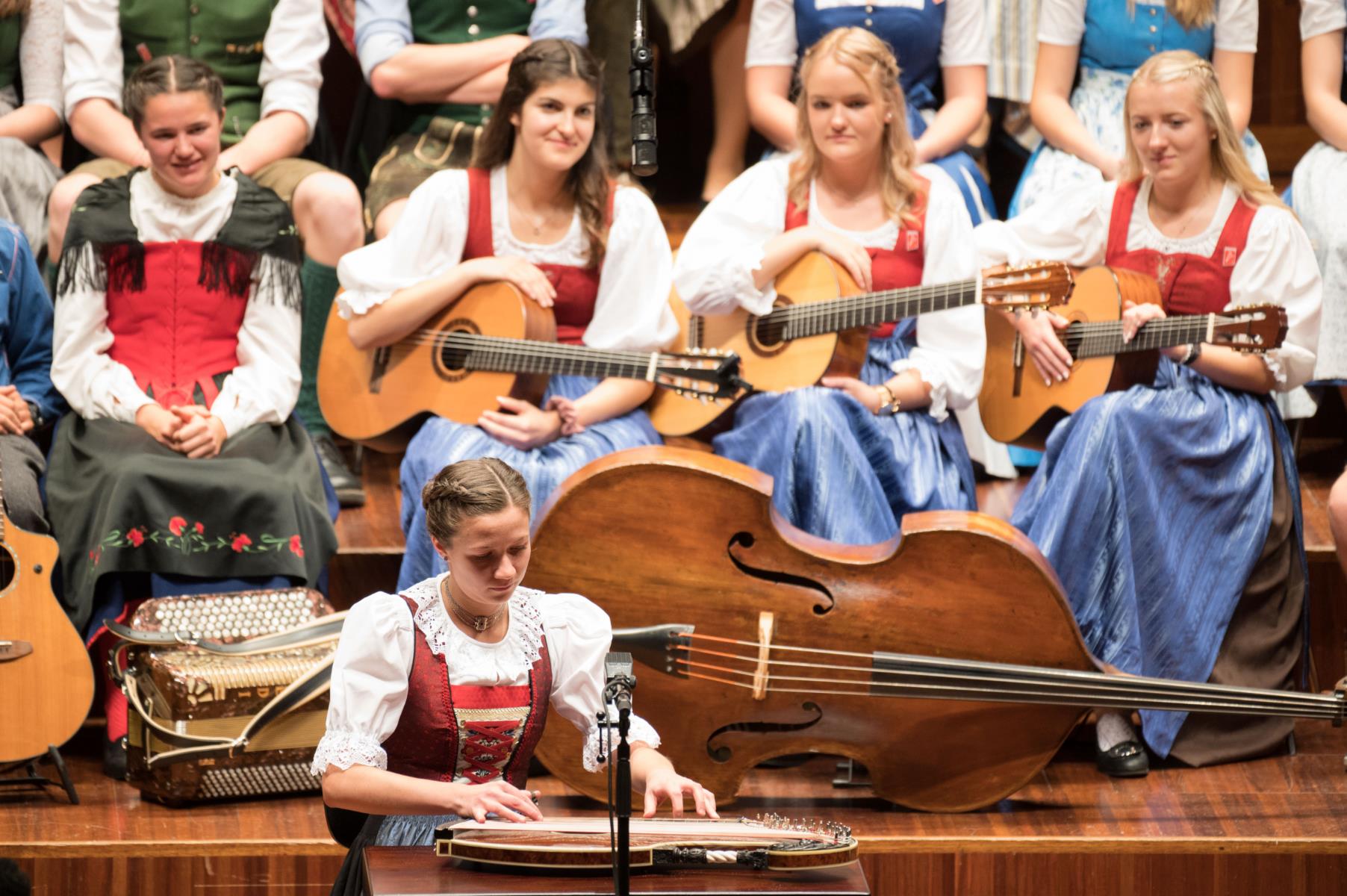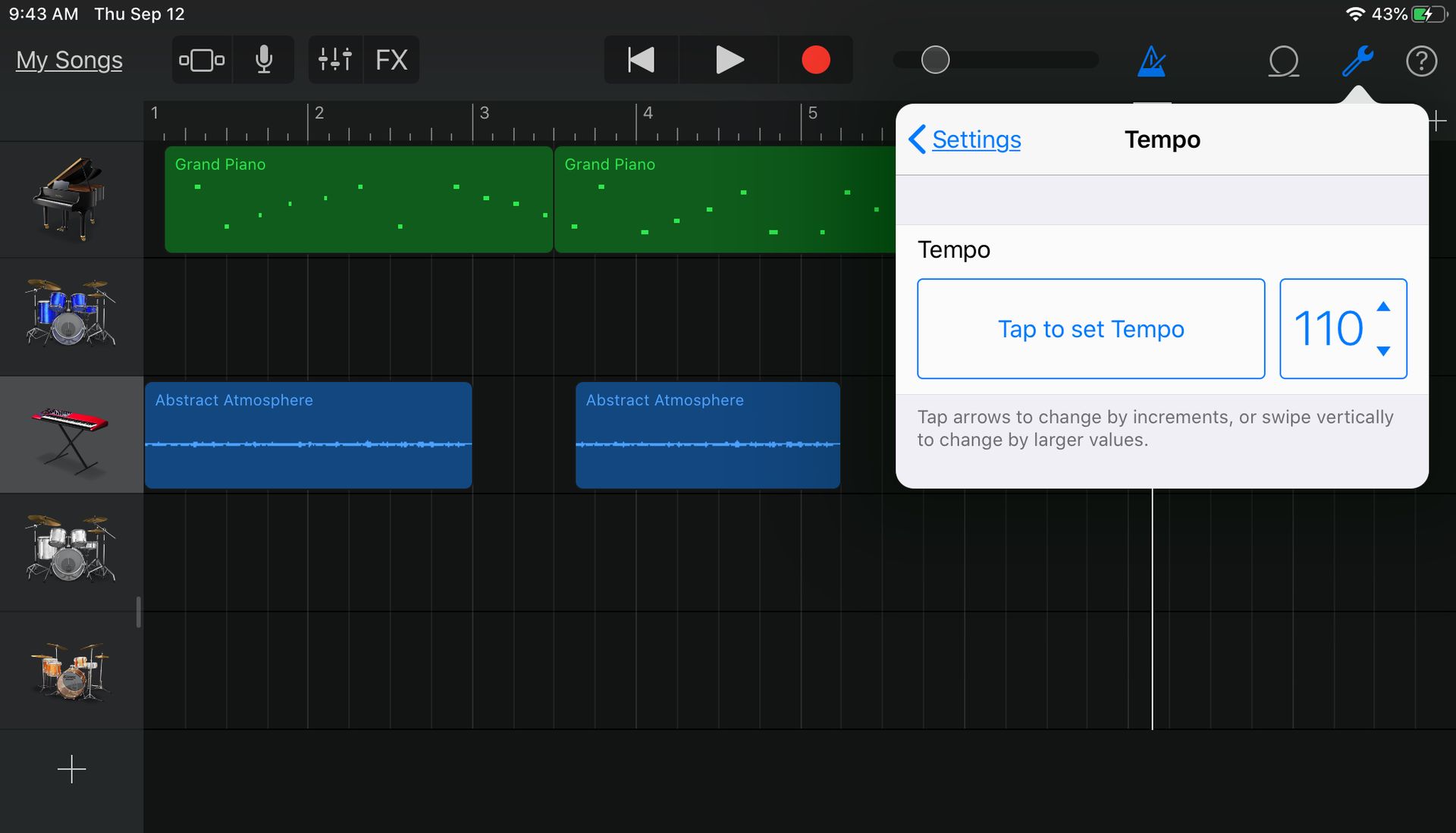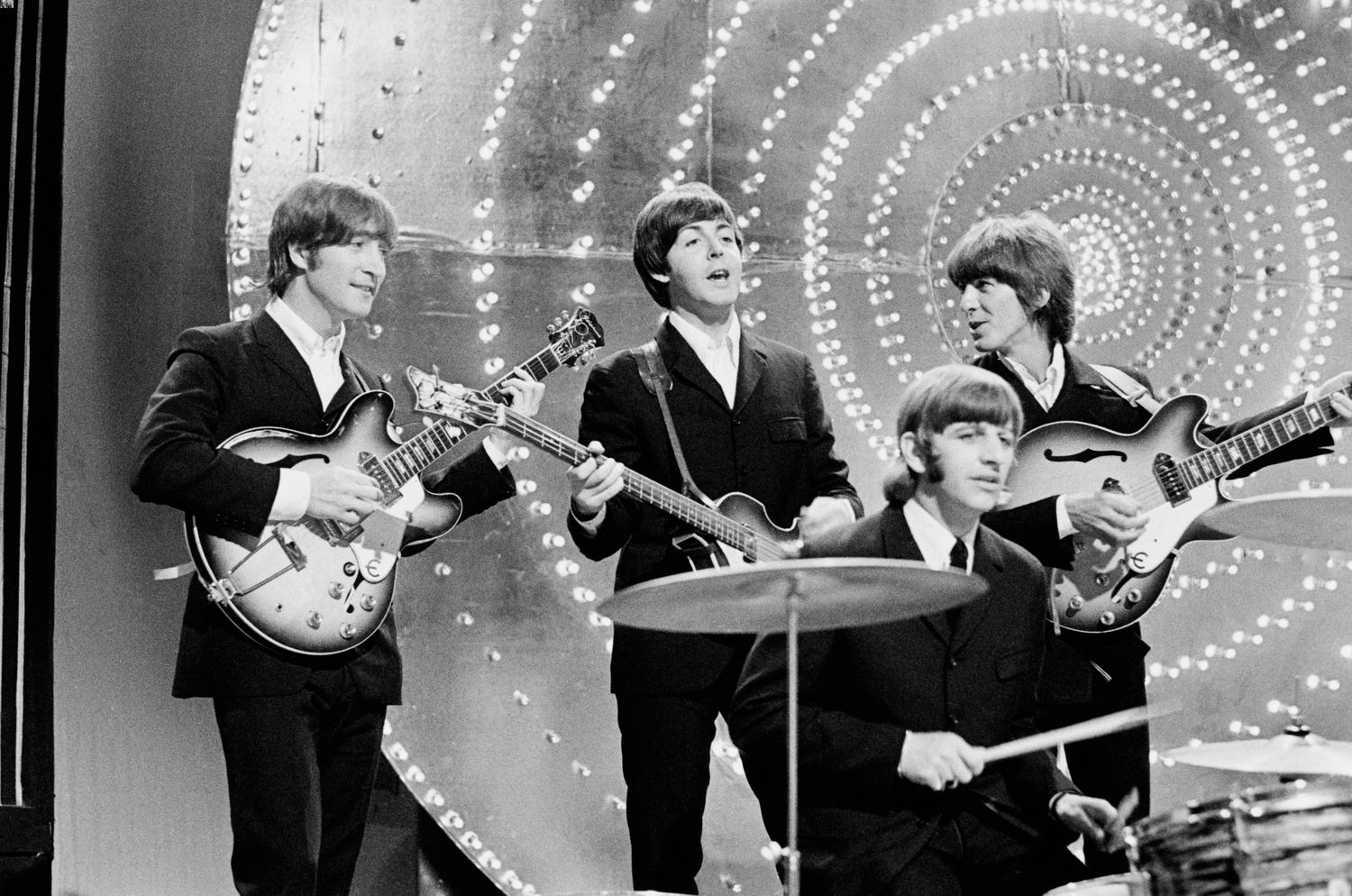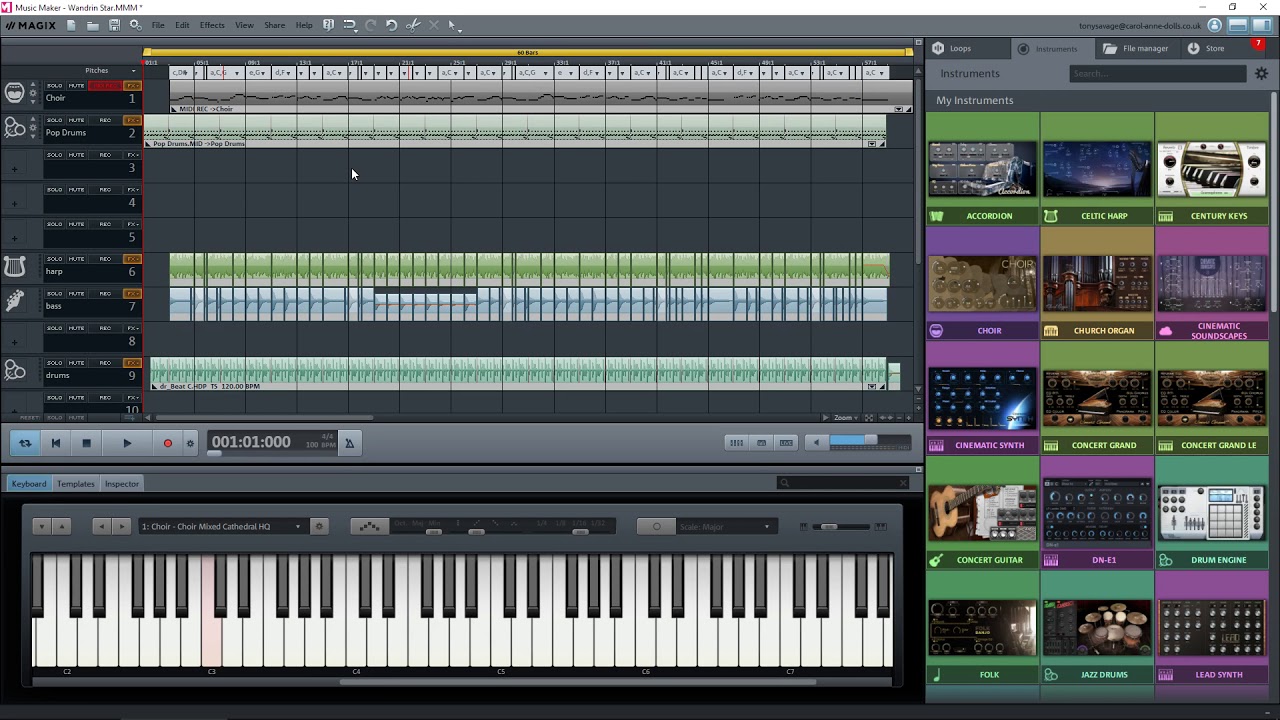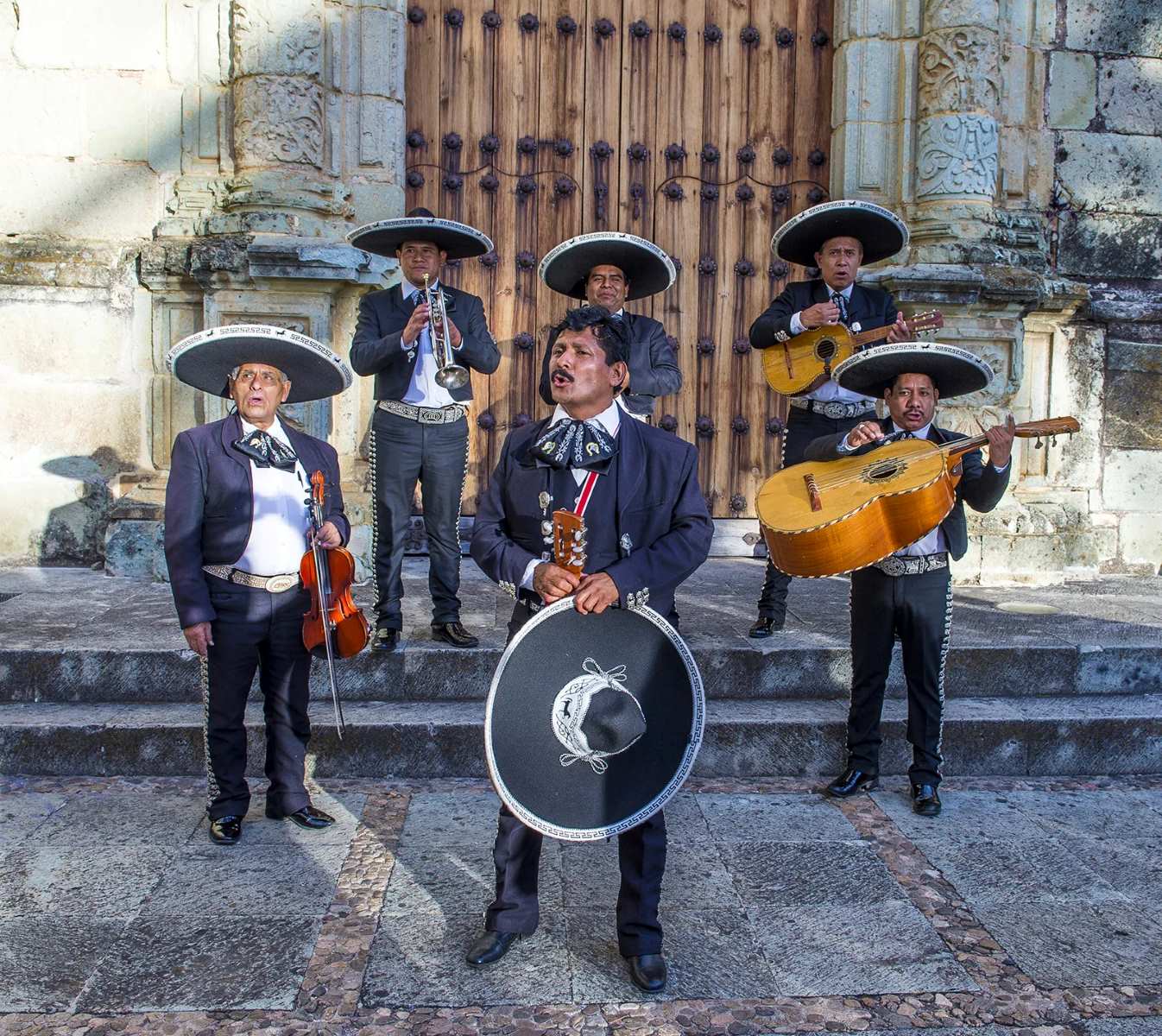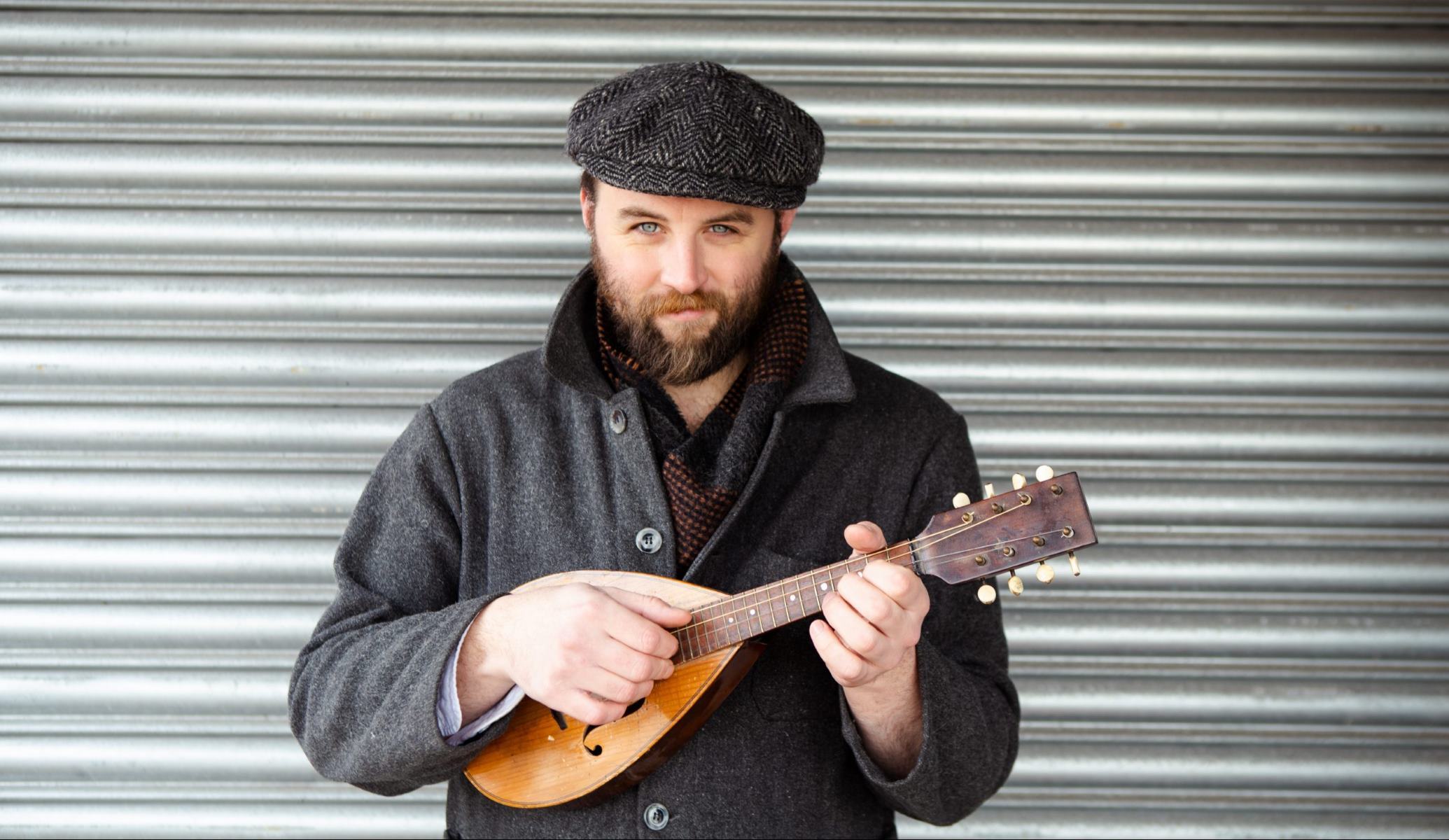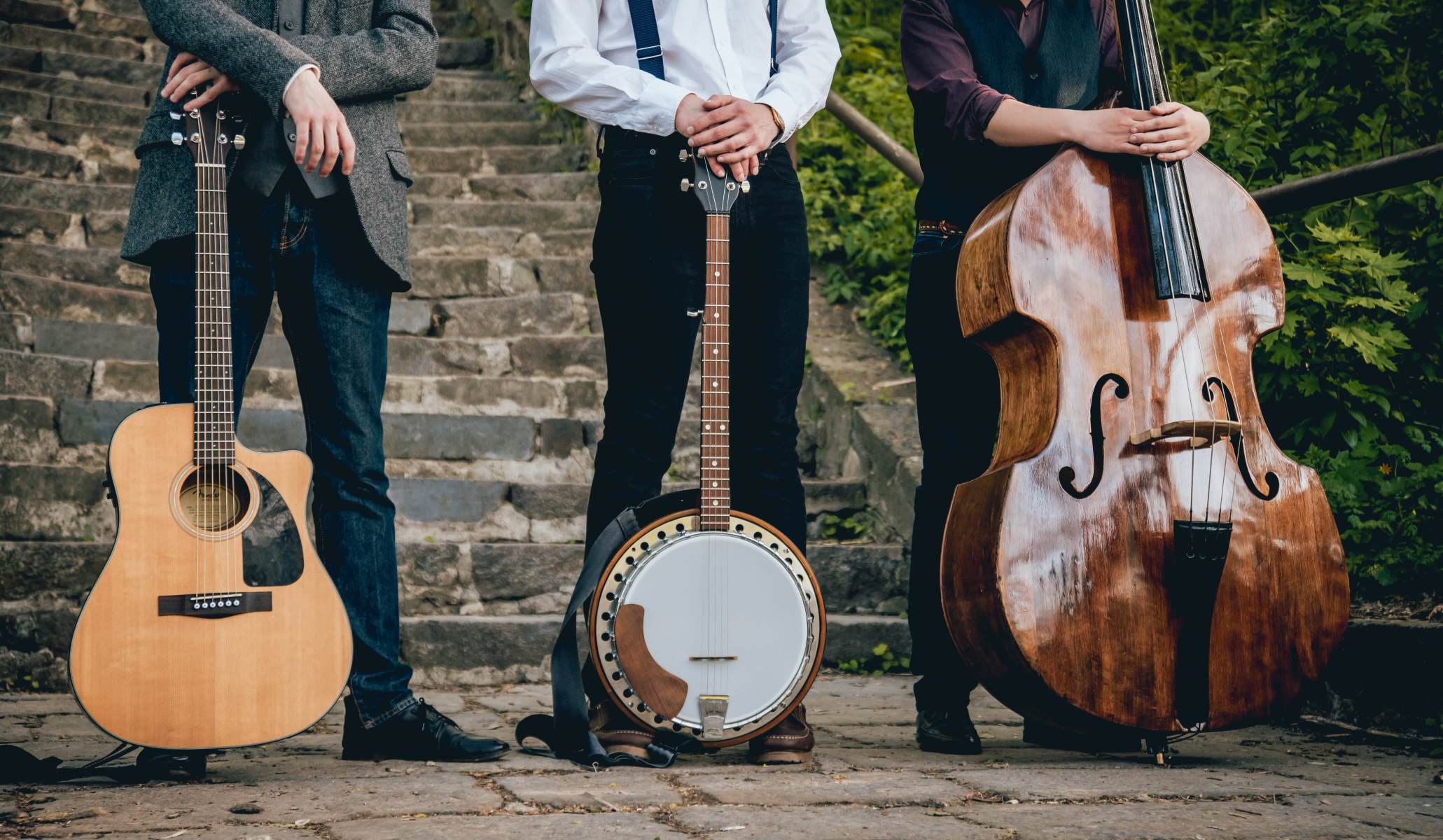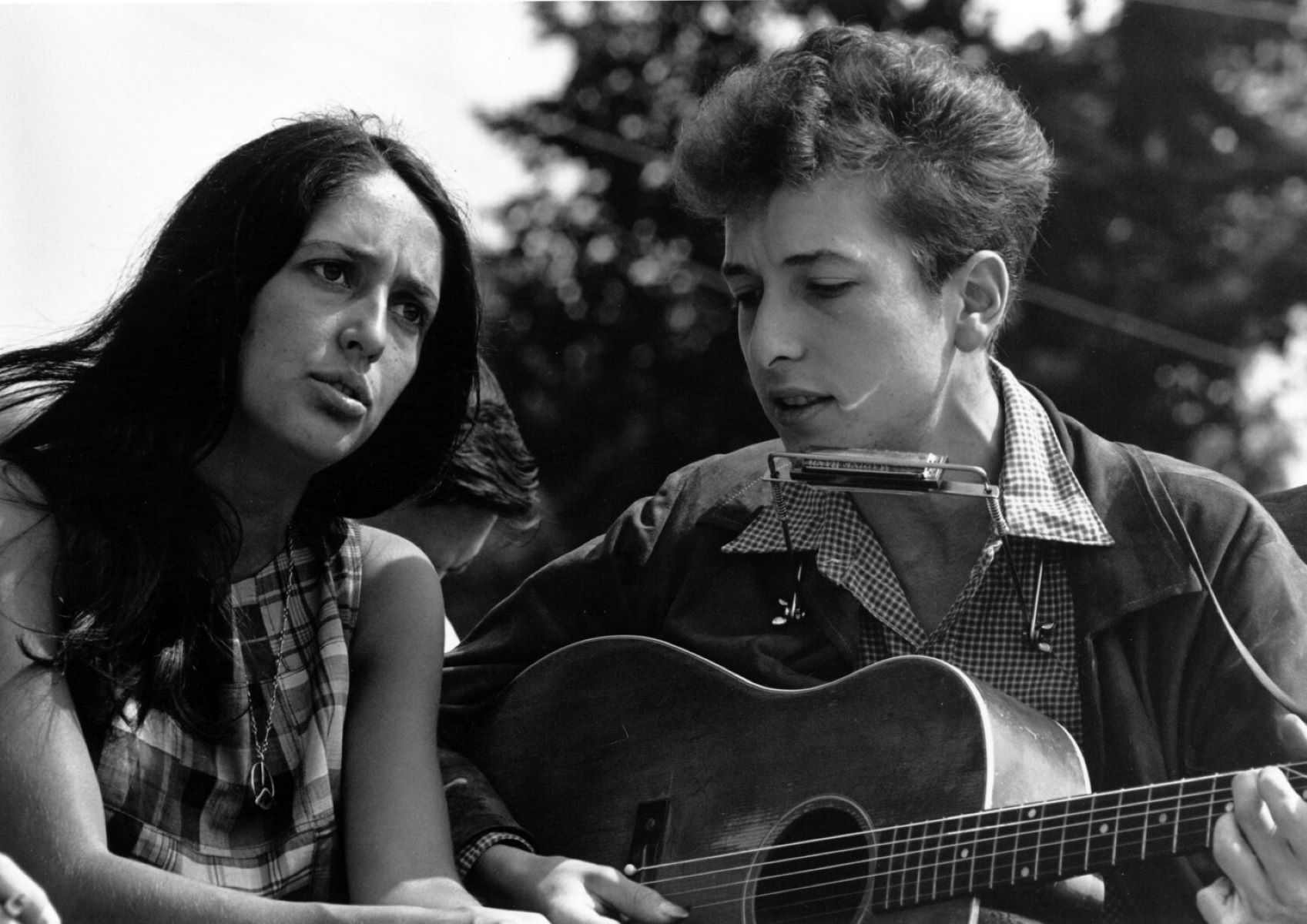

Folk
How Folk Music Changed In 1960S
Modified: March 11, 2024
Discover how the folk music genre underwent a transformative evolution during the 1960s, shaping the cultural landscape with its rich melodies and thought-provoking lyrics. Dive into the captivating history of folk music.
(Many of the links in this article redirect to a specific reviewed product. Your purchase of these products through affiliate links helps to generate commission for AudioLover.com, at no extra cost. Learn more)
Table of Contents
Introduction
Folk music has long been a vibrant and evocative genre, telling the stories of ordinary people and their experiences. In the 1960s, however, folk music underwent a significant transformation that would forever change its sound, themes, and impact. This era saw a surge of activism and social change, and folk music became a powerful tool to express the sentiments of the time.
The roots of folk music can be traced back to ancient times, with its origins deeply embedded in the cultural traditions of various communities around the world. It’s a genre that has always been closely connected to the experiences and struggles of everyday people. In the 1960s, folk music took on a new dimension as it became intertwined with the social and political movements of the era.
One of the defining aspects of 1960s folk music was the emergence of protest folk. While traditional folk music focused on storytelling and capturing cultural heritage, protest folk took on a more topical and politically charged approach. Artists began using their platform to address pressing social issues, such as civil rights, war, and inequality.
The Civil Rights Movement played a significant role in shaping the direction of folk music during the 1960s. Artists like Pete Seeger and Joan Baez used their music to advocate for racial equality and justice. Their songs, such as “We Shall Overcome” and “Birmingham Sunday,” became anthems for the movement, providing a sense of unity and empowerment to those involved.
The anti-war movement also had a profound impact on folk music during this era. As opposition to the Vietnam War grew, artists like Bob Dylan and Phil Ochs wrote powerful protest songs that resonated with a generation seeking change. Songs like “Masters of War” and “I Ain’t Marching Anymore” became rallying cries for those against the war, sparking conversations, and encouraging activism.
Origins of Folk Music
Folk music has its roots deeply embedded in the cultural heritage of communities around the world. It is a genre that reflects the stories, emotions, and traditions of ordinary people. The origins of folk music can be traced back centuries, evolving organically within different regions and cultures.
Traditional folk music emerged from oral traditions, passed down from generation to generation. It often features simple melodies and lyrics that tell stories of everyday life, love, loss, and societal issues. The songs were usually accompanied by acoustic instruments like the guitar, banjo, or fiddle.
In various parts of the world, folk music has distinctive regional flavors. For example, in Ireland, traditional Irish folk music combines lively dance tunes with poignant ballads that speak to the history and struggles of the Irish people. In the Appalachian region of the United States, Appalachian folk music showcases the unique blend of Scottish, Irish, and African influences.
During the 19th and early 20th centuries, folk music began to gain recognition and popularity beyond local communities. Folk music collectors like Cecil Sharp and Alan Lomax traveled around the world, documenting and preserving traditional folk songs. Their efforts helped bring awareness to the rich tapestry of folk music and its cultural significance.
In America, pioneers of folk music like Woody Guthrie and Lead Belly emerged during the Great Depression, using their music as a means to capture the struggles and experiences of the working class. These artists laid the foundation for the folk music revival that would take place in the 1960s.
The folk music of the 1960s built upon the traditional roots while incorporating elements of social consciousness and activism. It merged traditional folk sounds with contemporary themes, giving rise to protest folk, which became a powerful tool for expressing the sentiments of the era.
Overall, the origins of folk music lie in the hearts and voices of everyday people. It is a genre that has evolved through the centuries, adapting to the changing times while staying true to its storytelling essence. From its humble beginnings in local communities to its global influence, folk music continues to captivate audiences with its authenticity, cultural richness, and ability to connect us to the experiences of generations that came before.
Traditional vs. Protest Folk Music
Folk music has always been a genre deeply rooted in tradition, storytelling, and capturing the essence of cultural heritage. However, in the 1960s, folk music took on a new dimension with the emergence of protest folk. These two strands of folk music, traditional and protest, coexisted during this era, each with its own distinct characteristics and impact.
Traditional folk music, also known as traditional folk revival, focused on preserving and showcasing the music and traditions of the past. It sought to keep alive the timeless ballads, storytelling, and musical styles that had been passed down through generations. Traditional folk songs often revolved around themes of love, loss, and everyday life, reflecting the experiences and struggles of ordinary people.
Protest folk, on the other hand, emerged as a response to the social and political upheavals of the time. Artists began using their platform to convey messages of activism, social justice, and equality. Protest folk songs tackled pressing issues such as civil rights, war, and socioeconomic inequalities. They became anthems for change, resonating with the growing sentiment of dissatisfaction and the desire for a better world.
One notable example of traditional folk music is the work of artists like Pete Seeger and Joan Baez. They were influential figures in the traditional folk revival movement and focused on preserving and reviving the songs of the past. Their renditions of traditional ballads and folk songs captivated audiences by transporting them back to a bygone era.
At the same time, artists like Bob Dylan and Phil Ochs stepped into the spotlight with their powerful protest folk music. Their songs, such as Dylan’s “Blowin’ in the Wind” and Ochs’ “I Ain’t Marching Anymore,” became anthems of social commentary and unrest. These artists used their lyrics and melodies to address issues like civil rights, war, and political corruption, mobilizing a generation and giving voice to their frustrations.
While traditional folk music embraced the preservation of tradition and storytelling, protest folk infused the genre with urgency and a call for change. Together, they sparked a folk music revival that not only honored the roots of the genre but also served as a rallying cry for social progress.
The distinction between traditional and protest folk music is not rigid, and many artists incorporated elements from both strands. Through their music, they highlighted the importance of preserving cultural heritage while using it as a platform for the pressing issues of the time.
In the next sections, we will explore the significant influences of the Civil Rights Movement, the anti-war movement, and the counterculture on the evolution of folk music in the 1960s.
Influence of the Civil Rights Movement
The Civil Rights Movement of the 1960s was a pivotal moment in American history, and it had a profound impact on various aspects of society, including the world of folk music. The movement sought to end racial segregation and discrimination, promote equality, and secure civil rights for African Americans. Folk music became a powerful tool for expressing the sentiments and struggles of the movement.
Artists such as Pete Seeger, Joan Baez, and Odetta were at the forefront of using their music to advocate for civil rights. They performed songs that resonated with the experiences of African Americans, shedding light on the injustices they faced. These artists sang songs like “We Shall Overcome,” which became an anthem for the Civil Rights Movement, inspiring hope and unity amongst those fighting for equality.
Folk music provided a platform for artists to share stories of racial discrimination and inequality. The lyrics often addressed themes of racial injustice, segregation, and the desire for a more inclusive society. It helped raise awareness and galvanized support for the movement, as folk music could be easily shared and disseminated through concerts, protests, and recordings.
Moreover, folk music played a significant role in bridging the racial divide. Artists from different backgrounds collaborated and performed together, breaking down barriers and promoting dialogue. This cross-pollination of ideas and cultures helped foster understanding and solidarity among artists and audiences alike.
The influence of the Civil Rights Movement on folk music extended beyond lyrics and themes. The movement also brought attention to the contributions of African American artists, who had been historically marginalized and underrepresented in the music industry. Singers like Lead Belly and Mississippi John Hurt gained recognition during this era, and their music showcased the rich heritage of African American folk traditions.
Overall, the Civil Rights Movement provided a powerful backdrop for folk music to flourish and become a potent voice for social change. Through their music, folk artists played a crucial role in raising consciousness and promoting the ideals of equality and justice. The impact of their songs continues to resonate today and serves as a reminder of the power of music to inspire social movements and foster positive transformation.
Influence of the Anti-War Movement
The 1960s was a decade marked by widespread opposition to the Vietnam War. The anti-war movement grew in strength and became a significant force for change. Folk music artists played a crucial role in voicing the sentiments of the movement and galvanizing public support against the war.
Artists like Bob Dylan, Phil Ochs, and Country Joe McDonald used their music to protest the war and raise awareness about its devastating consequences. Their songs became anthems for the anti-war movement, resonating with a generation seeking to challenge the government’s actions.
Bob Dylan, in particular, became a voice of dissent through his iconic protest songs. Tracks like “Blowin’ in the Wind” and “Masters of War” encapsulated the disillusionment and anger felt by many towards the war. Dylan’s lyrics were sharp and evocative, reflecting the frustration and longing for peace among the youth.
Folk music’s intimate and powerful storytelling qualities made it perfect for conveying the human cost of war. Artists sang about the tragic experiences of soldiers, the impact on families, and the moral and ethical implications of war. They amplified the voices of those who opposed the war and highlighted the consequences of a conflict that seemed endless.
Protest songs were not limited to solo artists; they were anthems sung by crowds at anti-war demonstrations. One notable example is Country Joe McDonald’s “I-Feel-Like-I’m-Fixin’-to-Die Rag,” which became a popular anti-war chant. This song captured the disillusionment and satirical spirit of the movement, emphasizing the absurdity and tragedy of war.
The anti-war movement and folk music became intertwined, with artists actively participating in protests and playing at rallies. Their performances at events like the Woodstock festival and the Moratorium to End the War in Vietnam further solidified the bond between music and activism.
Folk music’s influence on the anti-war movement extended beyond the protest songs themselves. The genre’s authenticity and connection to everyday people made it relatable and accessible. It offered a platform to express dissent, discontent, and a desire for peaceful alternatives to conflict.
Ultimately, the anti-war movement drew strength from the fusion of folk music and activism. Through their songs, folk artists had a direct impact on public opinion, contributing to the growing opposition to the Vietnam War. Their music fostered a sense of unity and inspired a generation to question authority, speak out against injustice, and strive for a more peaceful world.
Folk Music and Counterculture
The 1960s was a time of immense social and cultural change, and folk music played a significant role in shaping the counterculture movement of the era. The counterculture rejected mainstream society’s norms and values, and folk music became an emblem of their ideals and aspirations.
Folk music resonated with the counterculture because it celebrated authenticity, individual expression, and social justice. The genre’s emphasis on storytelling and connecting with the struggles of everyday people aligned closely with the countercultural mindset. Artists like Bob Dylan, Joni Mitchell, and Joan Baez became icons for the counterculture movement, using their music to challenge the status quo.
One of the defining characteristics of the counterculture was its rejection of consumerism and materialism. Folk music, with its focus on the simplicity and emotional depth of acoustic instruments, offered an alternative to the commercialized pop music of the time. The intimate and stripped-down nature of folk music resonated with the countercultural value of authenticity and a connection to the roots of music.
Folk music also served as a means of expressing dissent and challenging social and political issues. Artists used their lyrics to critique war, racism, and social inequality. They became the voices of a generation that questioned authority and sought to create a more egalitarian and peaceful society.
Folk music festivals, such as the Newport Folk Festival, became gathering places for the counterculture movement, where like-minded individuals would come together to celebrate music, activism, and communal living. These festivals provided a platform for emerging folk artists to showcase their talents and connect with audiences who shared their values.
The counterculture movement influenced folk music just as much as folk music influenced the counterculture. The spirit of experimentation and pushing boundaries that characterized the counterculture found its way into folk music, giving rise to the fusion of genres such as folk rock. Artists like Bob Dylan and The Byrds embraced electric instruments and blended the acoustic sound of folk with the energy and edge of rock music.
In addition to the music itself, folk songs became a medium for spreading countercultural ideas and values. Protest songs were sung at rallies and marches, serving as anthems for social change. The lyrics became a way to express dissent and challenge the established order while rallying the counterculture movement.
Overall, the influence of folk music on the counterculture movement cannot be understated. It provided the soundtrack for a generation that sought to challenge societal norms, promote social justice, and create a more inclusive and compassionate world. The fusion of folk music and counterculture became a powerful force that continues to inspire and resonate with audiences today.
Bob Dylan: The Voice of a Generation
In the realm of folk music, few figures have had a more profound impact than Bob Dylan. With his distinctive voice, poetic lyrics, and unparalleled songwriting ability, Dylan became the definitive voice of a generation, capturing the spirit and aspirations of the turbulent 1960s like no other artist.
Bob Dylan’s music reflected the shifting social and cultural landscape of the time. Early in his career, his folk and protest songs, such as “Blowin’ in the Wind” and “The Times They Are a-Changin’,” resonated with a generation seeking change amidst the civil rights movement, anti-war sentiment, and emerging counterculture.
Dylan’s lyrics were often poetic and cryptic, challenging listeners to interpret and derive their own meanings. His songs were open to personal interpretation, allowing individuals to connect with his music on a deeply personal level. This ambiguity and depth made his music relatable to a wide range of people and facilitated its enduring popularity.
In addition to his songwriting prowess, Dylan’s voice and stage presence captured the attention of audiences worldwide. His distinctive nasal vocal delivery became an iconic part of his persona, further setting him apart as a unique and influential figure in folk music.
As Dylan’s career progressed, he pushed the boundaries of folk music by venturing into different musical genres. He famously experimented with electric instruments and rock-infused sounds, causing controversy among purist folk music fans. With albums like “Bringing It All Back Home” and “Highway 61 Revisited,” he heralded the era of folk rock and expanded both his audience and artistic reach.
Dylan’s impact extended beyond his own music. He influenced countless musicians and songwriters, inspiring them to delve into social and political themes within their own work. His influence can be seen in the work of artists such as Bruce Springsteen, Neil Young, and Patti Smith, who all carry on the tradition of using music as a tool for social commentary and cultural critique.
The Nobel Prize in Literature awarded to Dylan in 2016 highlighted the immense literary and poetic value of his songwriting. His lyrics have been studied in universities, dissected, and analyzed, solidifying his status as not just a musician but a true poet of the modern era.
Despite Dylan’s evolution and the passage of time, his music and influence remain as relevant and impactful today as they were in the 1960s. His songs continue to inspire and resonate with audiences, offering timeless insight into the human condition and the power of music as a catalyst for change.
Folk Rock: Blending Genres
In the 1960s, an exciting and innovative musical genre emerged: folk rock. Folk rock combined the acoustic, storytelling nature of folk music with the electrifying energy of rock and roll. This blending of genres created a unique sound that captivated audiences and changed the landscape of popular music.
Folk rock was born out of the evolving folk music scene and the shifting cultural climate of the 1960s. Artists such as Bob Dylan, Simon & Garfunkel, and The Byrds were at the forefront of this musical revolution, embracing the electric guitar and amplification while retaining the poetic and introspective songwriting of folk music.
The fusion of folk and rock was a natural progression for artists who sought a broader audience and wanted to explore new sonic possibilities. By incorporating electric instruments and elements of rock and roll, folk rock artists added a new dimension to the genre, creating a fuller and more vibrant sound.
One of the defining elements of folk rock was the combination of traditional folk melodies and lyrics with the driving rhythms and catchy hooks of rock music. This fusion provided a fresh and contemporary take on folk music, appealing to both folk enthusiasts and rock fans. The songs became more accessible and had a wider reach, bridging the gap between the two genres.
The Byrds, for example, took traditional folk songs and added jangly guitars and vocal harmonies, resulting in hits like “Mr. Tambourine Man” and “Turn! Turn! Turn!” Similarly, Bob Dylan’s transition to electric instruments with albums like “Bringing It All Back Home” and “Highway 61 Revisited” transformed his sound and showcased the versatility of folk-influenced rock.
Folk rock also pushed the boundaries of lyrical content. While traditional folk songs were often rooted in personal and storytelling narratives, folk rock expanded the range of topics. Artists began addressing social and political issues, love and relationships, and introspective themes with a newfound musical energy.
The influence of folk rock extended beyond the 1960s, with bands like Crosby, Stills, Nash & Young and Fleet Foxes carrying on the tradition. Even in the present day, the folk rock genre continues to evolve, with artists like Mumford & Sons and The Lumineers incorporating modern elements into their sound.
The impact of folk rock highlighted the power of blending genres and pushing musical boundaries. It opened the door for experimentation, allowing artists to explore new artistic directions while still maintaining a connection to the roots and authenticity of folk music.
Folk rock’s enduring popularity is a testament to its ability to resonate with listeners across generations. Its fusion of folk and rock elements created a legacy of influential music that continues to inspire and shape the musical landscape to this day.
Legacy of 1960s Folk Music
The 1960s was a transformative era for folk music, shaping not only the genre itself but also influencing the wider cultural and social landscape. The legacy of 1960s folk music continues to reverberate through the years, leaving a lasting impact on music, activism, and the collective consciousness.
One of the most significant legacies of 1960s folk music is its role as a vehicle for social change. Folk music became intertwined with the civil rights movement, the anti-war movement, and the counterculture, providing a voice for those seeking equality, justice, and cultural revolution. Artists like Bob Dylan, Pete Seeger, and Joan Baez used their music to address pressing social issues and inspire activism.
The protest songs of the era, such as “Blowin’ in the Wind” and “We Shall Overcome,” became anthems for change, resonating with audiences longing for a better world. These songs transcended the time period and continue to be relevant today, reminding us of the power of music to inspire social and political movements.
The 1960s also witnessed the birth of folk rock, a genre that blended the traditional acoustic sound of folk with the electrifying energy of rock and roll. This fusion gave rise to iconic bands like The Byrds and influenced the direction of rock music for years to come. The legacy of folk rock can still be heard in the works of modern artists who draw inspiration from the marriage of folk and rock influences.
Moreover, the legacy of 1960s folk music lies in its impact on songwriting and lyrics. Artists such as Bob Dylan, Joni Mitchell, and Leonard Cohen elevated the craft of songwriting, infusing their lyrics with poetic depth and introspection. They paved the way for subsequent generations of singer-songwriters who continue to find inspiration in their artistry and lyrical storytelling.
The cultural impact of 1960s folk music also extends to the preservation and appreciation of traditional folk music. Artists like Pete Seeger and Joan Baez played a vital role in documenting and reviving traditional folk songs, ensuring that the rich heritage of folk music would not be forgotten. Their efforts sparked renewed interest in folk traditions, leading to a resurgence in the appreciation and continuation of traditional folk music around the world.
Overall, the legacy of 1960s folk music can be felt in the ongoing relevance of its messages, the blending of genres it pioneered, the elevation of songwriting as an art form, and the preservation of folk traditions. Its impact on music, activism, and popular culture resonates to this day, reminding us of the enduring power of folk music to inspire, provoke, and bring about positive change in the world.
Conclusion
The 1960s was a remarkable decade for folk music, witnessing significant transformations and leaving a profound impact on the genre’s sound, themes, and influence. From the emergence of protest folk to the fusion of folk and rock, the music of this era became a powerful tool for expressing social and political sentiments.
Folk music in the 1960s gave voice to the civil rights and anti-war movements, providing anthems and rallying cries that inspired unity and activism. Artists like Bob Dylan, Pete Seeger, and Joan Baez became the troubadours of their generation, using their music to inspire change and challenge the status quo.
The legacy of 1960s folk music is not limited to the songs themselves. It encompasses a wider impact on culture and society. The counterculture movement found solace and inspiration in the authenticity and social consciousness of folk music, while folk rock opened up new sonic possibilities and influenced the direction of popular music.
The songs of the era continue to resonate today, reminding us of the power of music to inspire, provoke, and bring about positive change. They capture the essence of a turbulent time, where folk music served as a vehicle for expressing the hopes, dreams, and frustrations of a generation.
The impact of 1960s folk music goes beyond the boundaries of the genre, with its influence being felt in songwriting, social activism, and the appreciation of traditional folk music. It laid the groundwork for subsequent generations of artists who continue to draw inspiration from the fusion of genres and the powerful storytelling traditions of folk music.
As we reflect on the legacy of 1960s folk music, we recognize its enduring relevance and continued resonance. Its themes of social justice, political activism, and personal introspection remain as vital and pertinent as ever. The songs of this era serve as a timeless reminder of the power of music to challenge, inspire, and unite people in the pursuit of a more just and compassionate world.

